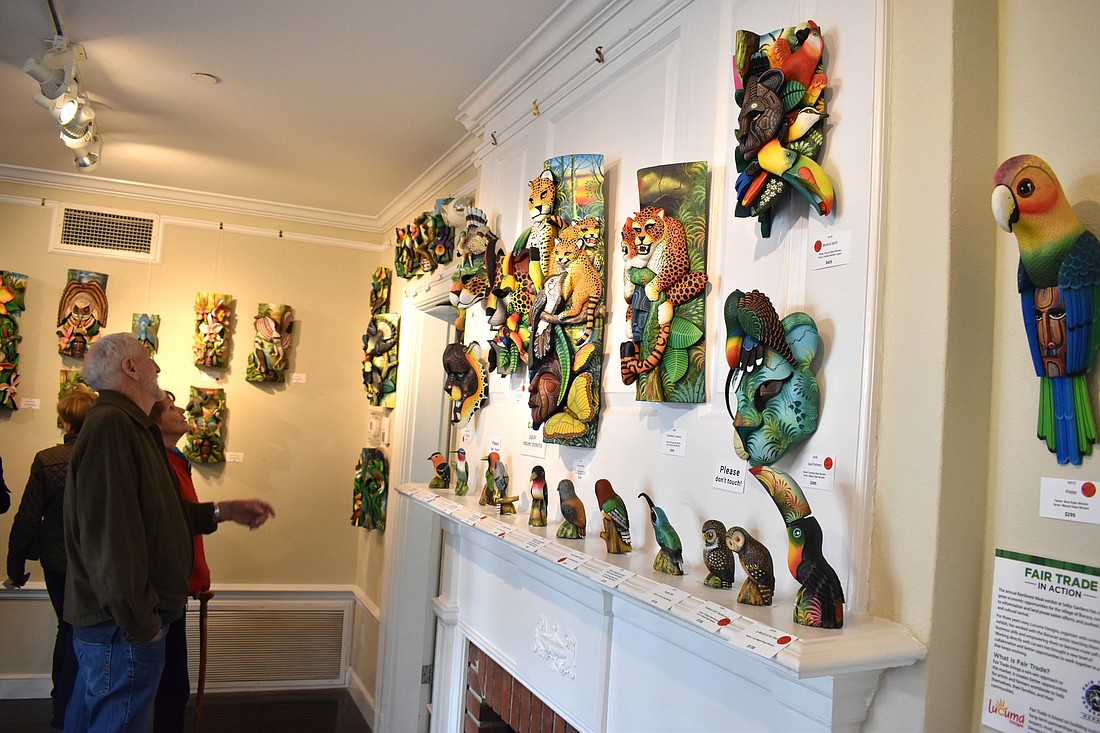- November 24, 2024
-
-
Loading

Loading

Every free spot along the mansion walls is covered with them. Hundreds of vibrant, painstakingly detailed masks that traveled more than 3,500 miles from the Boruca tribe’s village in Costa Rica to Sarasota.
This year marks the 15th anniversary of Marie Selby Botanical Gardens’ “Rainforest Masks of Costa Rica” exhibit, made possible for the past three years by a partnership with Bradenton wholesale fair trade group Lucuma Designs.
More than 300 masks are handmade by Boruca carvers and painters and brought to Selby every January to be sold to locals and tourists alike. But customers leave with more than a piece of art. The exhibit gives visitors a personal look at the culture of an indigenous group they might never have heard of otherwise.
Museum Exhibits, Learning and Engagement Vice President Jeannie Perales says the exhibit has become particularly popular with local art collectors — so much so that 80 masks were sold within just a few hours at the exhibit’s Jan. 5 opening reception.
Of the 336 masks in this year’s exhibit, more than 250 had been sold at the time of publication.
But what’s the Selby connection? Bringing two or three maskmakers from Boruca to Sarasota every year helps them learn about their own surroundings.
“Costa Rica is one of the most biodiverse countries in the world,” Perales says. “We have all tropical plants here, many of which they have in their village. So when artists come here and tour the gardens, their masks become more (botanically) accurate.”
The masks have an origin story dating back 500 years, when they were first made to scare off Spanish invaders.
For the past 300 years, the Boruca people have kept this story of their brave warriors alive through a festival dubbed Fiesta de los Diablitos. But Perales says village children started showing up to the festival with masks of American superheroes. The older village inhabitants realized something needed to be changed.
The modern masks shown in the Selby exhibit are an iteration of the mask style that began in the 1980s when the elders began worrying younger generations were losing their connection to tribe culture. Artist Don Ismael Gonzalez trained a group of young boys between the ages of 11 and 12 to make the traditional masks, and thus a new generation of artisans was born.
Each mask is made from a single log of balsa wood, which is carved by one artist and painted by another. The most popular masks are now representations of the rainforest and its inhabitants, such as hummingbirds and panthers, all watched over by a serious male figure representing the spirit protector of the rainforest.
Perales says the visiting artists are always eager to learn during their Sarasota stay.
“The artists are so humble,” Perales says. “They never see their work all together — it’s truly a one-of-a-kind exhibition.”